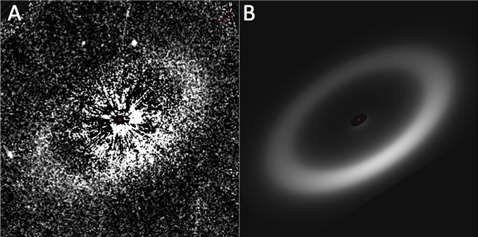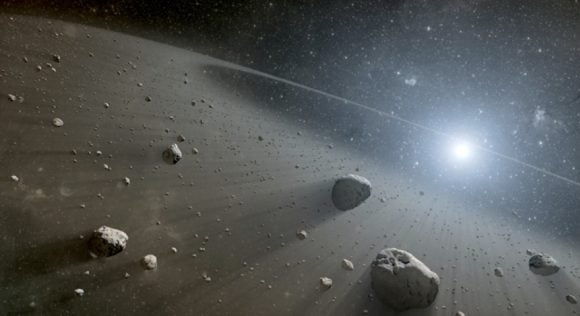A team using the Hubble Space Telescope has imaged circumstellar disk structures (CDSs) around three stars similar to our Sun. The stars are all G-type solar analogs, and the disks themselves share similarities with our Solar System's own Kuiper Belt. Studying these CDSs will help us better understand their ring-like structure, and the formation of solar systems.
The team behind the
study
was led by Glenn Schneider of the Seward Observatory at the University of Arizona. They used the Hubble's Space Telescope Imaging Spectrograph to capture the images. The stars in the study are HD 207917, HD 207129, and HD 202628.
Theoretical models of
circumstellar disk
dynamics suggest the presence of CDSs. Direct observation confirms their presence, though not many of these disks are within observational range. These new deep images of three solar analog CDSs are important. Studying the structure of these rings should lead to a better understanding of the formation of solar systems themselves.
[caption id="attachment_130798" align="alignnone" width="478"]
A is the observed image of HD 207917. B is the best-fit debris ring model of the same star. Image: Hubble, G. Schneider et. al. 2016.[/caption]
Debris disks like these are separate from
protoplanetary disks
. Protoplanetary disks are a mixture of both gas and dust which exist around younger stars. They are the source material out of which
planetesimals
form. Those planetesimals then become planets.
Protoplanetary disks are much shorter-lived than CDSs. Whatever material is left over after planet formation is typically expelled from the host solar system by the star's radiation pressure.
In circumstellar debris disks like the ones imaged in this study, the solar system is older, and the planets have already formed. CDSs like these have lasted this long by replenishing themselves. Collisions between larger bodies in the solar system create more debris. The resulting debris is continually ground down to smaller sizes by repeated collisions.
This process requires gravitational perturbation, either from planets in the system, or by binary stars. In fact, the presence of a CDSs is a strong hint that the solar system contains terrestrial planets.
[caption id="attachment_130800" align="alignnone" width="580"]
A circumstellar disk of debris around a mature stellar system could indicate the presence of Earth-like planets. Credit: NASA/JPL[/caption]
The three disks in this study were viewed at intermediate inclinations. They scatter starlight, and are more easily observed than edge-on disks. Each of the three circumstellar disk structures possess "ring-like components that are more massive analogs of our solar system's
Edgeworth–Kuiper Belt
," according to the study.
The study authors expect that the images of these three disk structures will be studied in more detail, both by themselves and by others in future research. They also say that the James Webb Space Telescope will be a powerful tool for examining CDSs.
Read more:
It's Complicated: Hubble Survey Finds Unexpected Diversity in Dusty Discs Around Nearby Stars
 Universe Today
Universe Today


